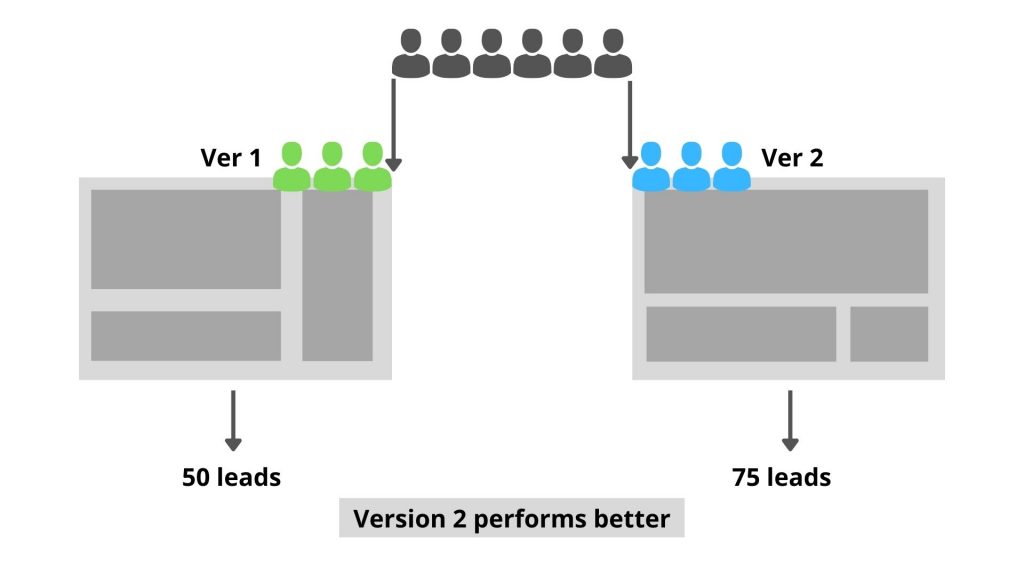People come up with new, unique, and sometimes crazy business ideas every day, but before bringing them to life, it's important to determine whether your idea is crazy in a good way or a bad way.
Building an MVP (Minimum Viable Product) is a popular way to check and validate your business idea without wasting time and money on something that may not work. But, you can't simply build it and wait for the results to arrive on their own. You need to have a clear plan for showcasing your MVP for your target audience, gathering their feedback, and analyzing the incoming data.
Before digging through all of the available methods for testing your MVP, let's take a step back and define who you can test it on.
Who is your audience for MVP testing?
It's important to start by pointing out that your target audience for a test is a little bit different from the target audience for your end product. Below are the three potential groups you can engage in testing your new big thing:
Early Adopters - These are the people who love and strive for new products in your category. They will be among the first to try it and will gladly give you valuable feedback.
Tech Evangelists - Experts in either your field or startups in general. They will deeply examine the functionality and growth potential of your solution and will carefully observe its evolution from early stages to the final version.
Investors - These people will review your idea from another perspective – whether or not it is capable of making you (and them) money.

In other words, you should focus on people who are as enthusiastic about creating new things as you are. Regular users won't be that eager to shift from their usual instruments to test something new.
Now that we are clear about who is on our testing team, let's move to our best MVP testing techniques to help you create something really great.
Top 20 Ways to Validate MVP
There are millions of ways to future-proof your MVP, but in this article, we'll list the most popular and proven ones based on our experience.
1. Fundraising
The most direct way to find out whether people are ready to pay for your solution is, well, to start collecting money. Crowdfunding is one of the best ways to do so. Kickstarter and Indiegogo are the best platforms for displaying your idea to the public, and you can gain initial funds and traction in the process. This process exposes your MVP to evangelists and investors, who are our best testers at this stage. If their feedback is positive, you'll most likely have plenty of resources for a successful launch.
2. Blogs
If you have already built a loyal audience with your blog, it would be almost criminal not to use them in your validation process. This audience is already interested in what you've got for them. And, even better, addressing them is a win-win solution: if their feedback is positive, you'll have more people waiting for your product launch; if it’s negative, they will still appreciate you valuing their opinion, which will result in an even more loyal and active audience.
3. Ask your clients
Talking with your prospects face-to-face is a good way to get genuine feedback. People are more likely to lie or embellish their reviews online, but when you are there to see and listen to their reactions you have all chances to learn what they really think. Just don't make it like an interrogation. Survey customers in a light and casual manner.
4. Explainer videos
The viewing time of video content keeps growing year by year, so using it in your strategy is always a good idea. Video is an extremely effective and comprehensive way to demonstrate the functionality and distinctive features of your product. The viewer gets a cmprehensive picture of what your solution is and how they can benefit from it. And, yes, you can easily use a video in connection with other methods from this list.
5. Pre-order
If people are ready to pay for your product in advance, then your idea is definitely good. This model works especially well with books and gadgets. However, it’s also very risky. Even if your idea is good, many people won’t be ready to pay for it while it is not yet available, especially if they are not 100% confident that they’ll get what they expect from it. So, if you use this method, try to make your product presentation as clear and catchy as possible.
6. Emails
The best thing about mailings is that most modern tools give you quick and deep metrics analysis in just a few clicks. After sending emails about your MVP, you can count CTR, open rate, bounce rate different types of conversions, and more. This will give you a sense of how catchy your idea is. This method works best if you already have a prospects database and an e-mail marketer.
Check out a related article:
Prioritize It: 11 Methods to Select Features for Your MVP
7. Surveys on social networks
Social media is where people come to share their opinion about anything, so there’s a high chance they’ll share their opinion about your product as well. SMM surveys are quick and easy and can often help you obtain genuine feedback. Your main task here is to make your questions relevant and easy to understand. In addition, answers should not require too many lines of text. Social scrolling is the way many people relax, and typing would be a true challenge for many of them.
8. 3D molding or paper prototypes
This method is good for physical products like gadgets or appliances. The opportunity to hold the product and simulate interaction will give your testers a more holistic experience of the end solution, which will help them provide you with more relevant feedback.
9. Market analogs
It’s very likely that someone has already tried to market an idea that is similar to yours. It may sound counterintuitive, but that’s not a bad sign. If no one has tried your idea before, that might be a sign that no one truly needs it. Study existing products, compare their features to your idea, explore what people like and don’t like about your competitors, and use this data to make something even better.
10. A/B testing
With A/B testing, you show randomly grouped prospects different versions of your web page. After analyzing these two variants’ KPIs, you can clearly define which one works better. This can be an iterative process. You can run as many tests as you need to find the optimal feature set.

11. Landing pages
Landings have proven to be an effective way to showcase your product and collect leads at the same time. Additionally, you can analyze how your prospects interact with the page. This will help you learn what aspects of your product draw maximum attention. Therefore, you shouldn’t forget to integrate an analytics tool like Google Analytics or KISSmetrics.
12. Piecemeal MVPs
Piecemeal MVPs are demos built using existing tools. Instead of doing something from scratch, you can use no-code instruments or a CMS like WordPress or Shopify. After you get enough feedback on this basic solution, you can proceed to create your product with more advanced tools.
13. Mini-surveys
Long surveys can discourage people from filling them out. Therefore, short surveys of 2-3 questions are more useful. If you can’t get enough relevant feedback in 2-3 questions, no worries; just separate your list into a few mini-surveys and ask people randomly. After merging the results, you’ll have a full and rather genuine review.
14. Ads and PPC
Dedicating a small amount of money to run an ad and check to see if it converts is a good way to check the future ROI of your product. If people engage with your ads now, there’s a high chance the result will be even better after the official launch.
15. SaaS and PaaS
This method is close to piecemeal MVP. If your product is based on an existing business model (e.g., a marketplace or mobile ad platform), using SaaS and PaaS to build your MVP is a brilliant idea. Such a solution makes development fast and easy. It also eliminates widespread code- and design-related issues.
16. Wireframes and prototypes
You can try showcasing the product’s interface without any code applied. Prototypes can be of different levels of fidelity, starting from schematic mockups and ending with finalized UI with some logic applied. This will help your users understand the way your product works and will show you how usable it is.
By the way, we’ve got a separate article about how helpful prototypes can be - How Prototyping Helps to Make Better Digital Products
17. Manual-first MVP
A tricky but effective method that is also called Wizard of Oz.
When a user tries the product, it is delivered manually. In other words, users believes that they’re using a complete product, while all the work is happening manually behind the scenes.
This helps you test your MVP through and out. You can also combine it with A/B testing to validate several assumptions.
18. Concierge MVPs
The concierge MVP approach is very close to manual-first MVP. The only difference is that the product isn’t faked behind the scenes; it’s real, and we offer customers a highly customized experience.
19. Single-feature MVP
Your product can be feature-rich, but only one functionality brings major value to your users. Focus on validating it. If it proves to be useless, then the whole product may not be worth a single coin. This testing strategy is one of the most recommended by many MVP development companies.
20. Software testing
This approach is often used by game development companies, but you can also benefit from it. Invite users to test your product. This method has multiple advantages: you get genuine, firsthand feedback, you get a chance to find some critical bugs before the massive launch, and users who contribute to your product development are more likely to become your brand ambassadors.
Final Words
Woooh! This was a rather long list. We hope some of these ideas will help you develop and validate your own next big thing. Some of these methods may look costly and time-consuming, but don’t let that discourage you from running them. Ultimately, better analysis in the early stages will help you save much more later.
If you are in need of a reliable software development partner to advise you on the best testing strategies and assist you with the development of your MVP, don’t hesitate to contact us. We’ve got dozens of experience-proven techniques to help you.

Leave a Comment